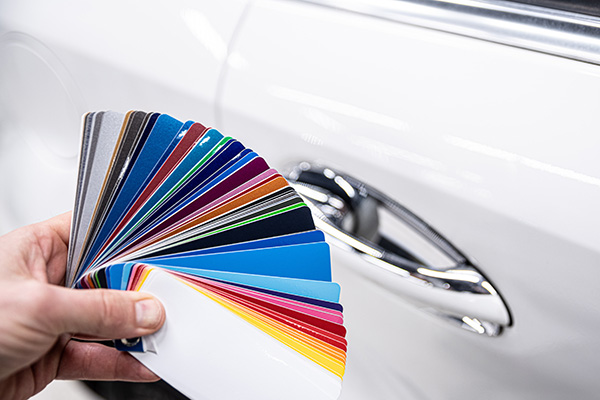
When your car gets damaged, you first worry about the cost and the process of fixing it. However, an equally critical concern is whether the repaired area will match the rest of the car's paint. Achieving a perfect paint match is a delicate art, requiring a blend of skill, precision, and the right tools. We will explain how professionals ensure that the newly painted area seamlessly blends with the existing finish, making your car look as good as new.
The Importance of a Perfect Paint Match
You might wonder why achieving a perfect paint match is so crucial. It's not just about aesthetics, though that's a significant part. A mismatched paint job can devalue your car and signal to potential buyers that it has been in an accident.
Inconsistencies in the paint can lead to more noticeable wear and tear over time, as different paint types and layers might react differently to the elements. So, getting the paint right is essential for your vehicle's look and longevity.
Assessing the Original Paint
The first step in achieving a perfect paint match is thoroughly assessing the original paint. Professionals use various tools and techniques to identify the exact shade, finish, and texture. One common tool is a spectrophotometer, which measures the intensity of light reflected from the paint surface.
This device provides precise data on the color, which can then be matched with the manufacturer's paint codes. The vehicle's age, exposure to sunlight, and even the specific manufacturing batch can affect the paint's current appearance, making this step critical.
Mixing the Paint
Once the original paint's specifics are determined, the next step is mixing the paint. This is where the expertise of a skilled technician comes into play. Using the data from the spectrophotometer, they blend various pigments to recreate the exact shade. It's a meticulous process, often involving trial and error.
A tiny discrepancy in the mix can result in a noticeable difference, so attention to detail is paramount. The mixed paint is then tested under different lighting conditions to ensure it looks consistent in all environments.
Applying the Paint
The application process is as important as the paint itself. The area to be painted must be meticulously prepared, which includes cleaning, sanding, and priming. Any imperfections in the preparation stage can cause the paint to adhere improperly or appear uneven.
Professional painters use high-quality spray guns to apply the paint in thin, even layers, ensuring a smooth finish that blends seamlessly with the surrounding areas. Techniques such as feathering the edges of the new paint into the old are employed to achieve an imperceptible transition.
Blending and Polishing
After the paint is applied, blending and polishing are essential to achieving a flawless finish. Blending involves carefully tapering the new paint into the old paint, often extending slightly beyond the repair area to ensure a seamless transition. This step requires a high level of skill and an eye for detail.
Once blended, the entire area is polished to match the original paint's gloss and texture. Polishing removes any minor imperfections and enhances the overall appearance, making the repaired area indistinguishable from the rest of the car.
Final Inspection and Quality Control
A thorough final inspection is conducted before the car is returned to the owner. To ensure consistency, this involves checking the paint match under various lighting conditions, including natural sunlight and artificial lights. Any discrepancies are addressed promptly. This stage ensures that the paint job meets the highest standards of quality and that the car looks as good as it did before the damage.
Do you need auto body repair? Contact Auto Clinic Care for precision and perfection in every paint job. Book your appointment now!